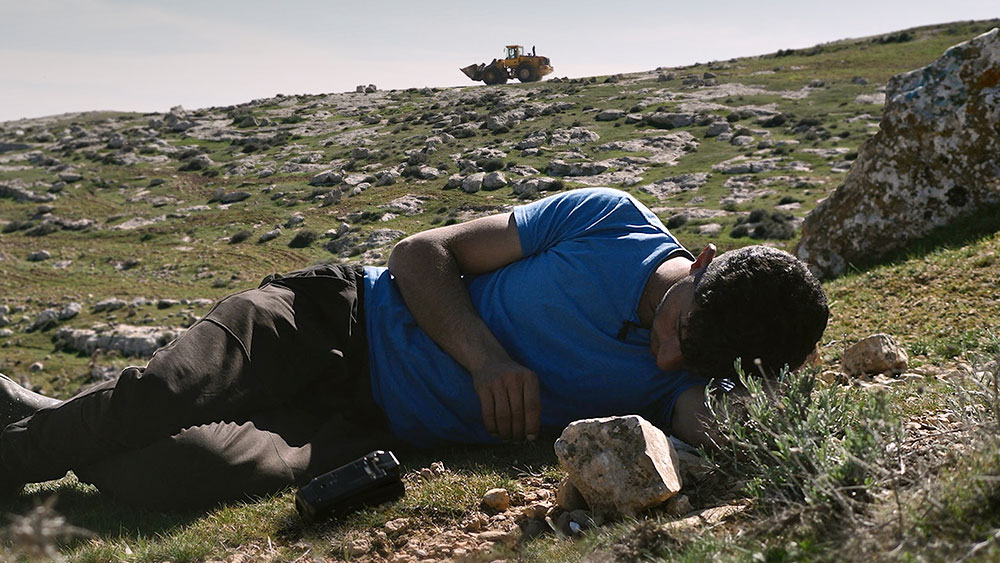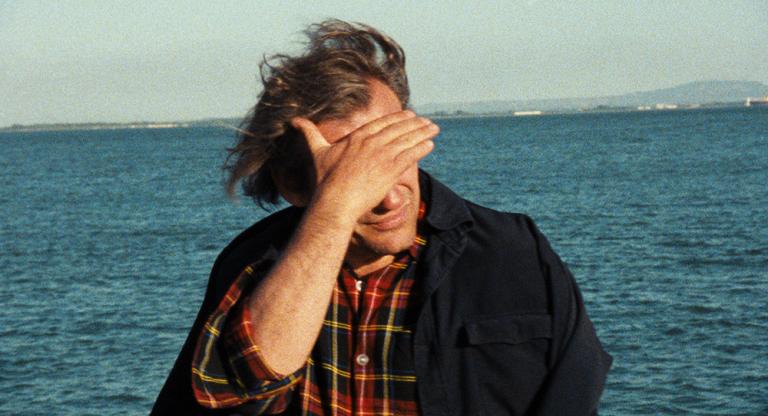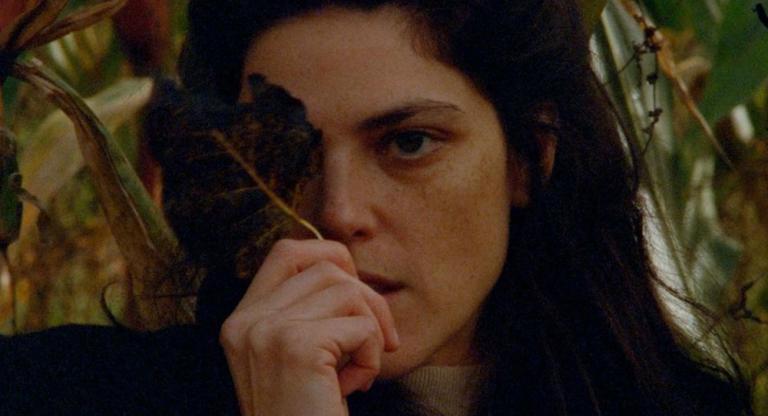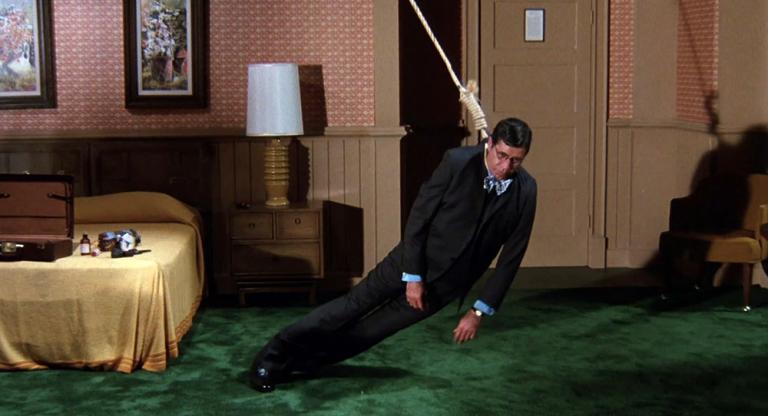Our dispatch of the 2024 New York Film Festival comes courtesy of Amy Taubin, Stephanie Monohan, and Olivia Crough, who offer their impressions of this year’s lineup, political films, and titles in the Currents program.
Amy Taubin, NYFF 2024
In the Walter Reade theater at the press and industry screening of Brady Corbet’s The Brutalist (2024), the neck swiveling and excited chatter was reminiscent of, well, cut to Auditorium Assembly on the first day of High School. I’ve attended the New York Film Festival wearing various hats since its1963 inauguration, which served up Luis Buñuel’s The Exterminating Angel in Philharmonic Hall on opening night. Although the festival is larger and broader now, it remains a celebration of cinephilia and as such, was never as necessary as it was this year. People talked about movies as if they mattered for culture, for politics, and for how we live with one another.
Whether or not by accident, filmmakers who came of age in this century dominated the “Main Slate” during the first half of the festival schedule. The opening night selection, RaMell Ross’s Nickel Boys (2024), is a haunting, horrifying adaptation of Colson Whitehead’s novel of nearly the same name, that shares the same lyrical, impressionist imagery, and bracing disregard for narrative conventions that made Ross’s 2018 documentary Hale County, This Morning, This Evening an arresting debut. There soon followed the aforementioned The Brutalist, with a galvanic performance by Adrien Brody as an immigrant Jewish genius architect who is nearly destroyed by his spoiled old-money WASP patron, played with equal brilliance by Guy Pearce. No less dazzling was Mikey Madison in Sean Baker’s Palme D’Or winner Anora (2024), which is Pretty Woman (1990) with ass, and much, much more. Madison’s Anora is a stripper from a working-class Brighton Beach Russian family who mistakenly believes she’s found her Prince Charming in the form of the callow, drunken, 20-year-old son of a Russian oligarch. He is definitely no Richard Gere.
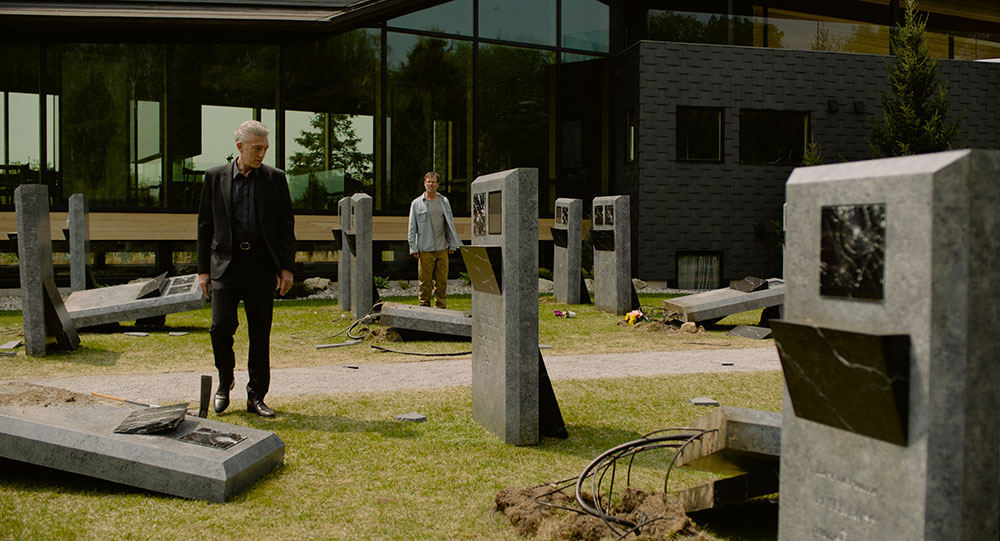
But among the cluster of films in the festival’s second week by the old guard (directors who had made their mark before the turn of the century) which were less showy but tougher than the discoveries programmed in the first week, I found Gere, facing down his mortality and by proxy, that of the film’s director, in Paul Schrader’s characteristically withholding but nevertheless moving Oh, Canada (2024). David Cronenberg, whose entire oeuvre has been a wildly romantic treatise on symbiosis and the looming threat in the words “until death us do part,” delivers, in The Shrouds (2024), a mordantly witty and unsparingly depressive vision of life after one half of a dyad is no more. Mike Leigh returns to contemporary family life with Hard Times (2024), which is basically a character study of a woman whose unrestrained anger is devastating to everyone around her, and most of all to herself. The raw emotional intensity of Marianne Jean-Baptiste’s performance is a gift to the film beyond measure. Just as great an actor, but operating in a different register, Zhao Tao travels silently through Jia Zhangke’s Caught by the Tides (2024), a fragmented history of the director’s own films and of 25 years of bewildering change in China. In the movie’s final moments, Zhao’s character makes a decision that proves she is what Jia describes as “a strong woman” and moreover, the personification of his love for the Chinese people. A near anomaly in a purposefully grim festival, All We Imagine as Light (2024) by Payal Kapadia, one of the youngest filmmakers in the “Main Slate,” evokes the sensory allure of Mumbai through the experiences of three women of different ages who work in a hospital and find a measure of liberation only by leaving the city that had seduced them but offered only a diminished future. Kapadia’s fiction film debut showed late in the festival and its ocean ending, replete with a beach-front bar strung with fairy lights, where people dance to wonderful music, proved irresistible.
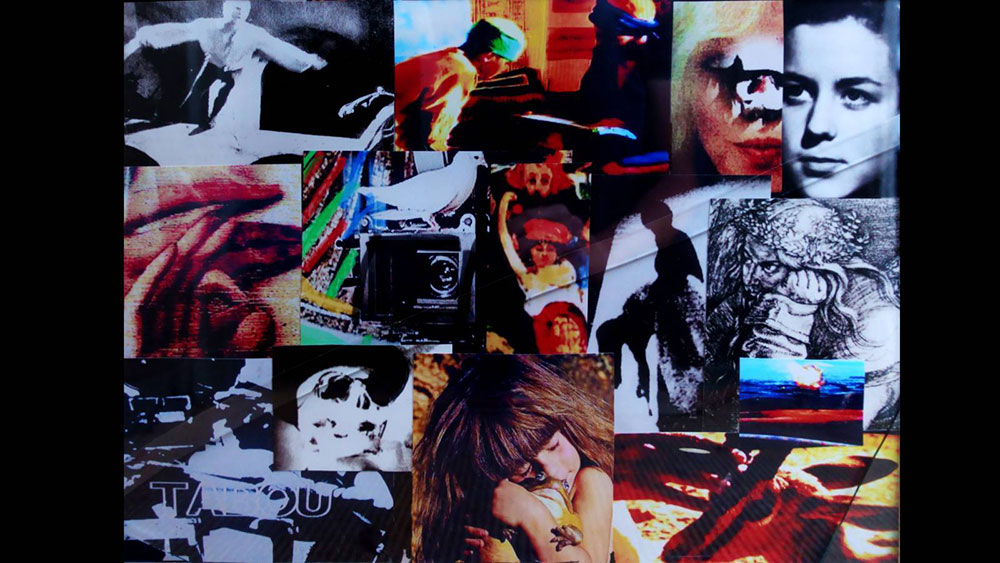
Still, the most surprising aspect of the “Main Slate” was the inclusion of five documentaries, two of them more powerful testaments to these chaotic, dangerous times than any fiction could possibly be. Set in a remote part of the West Bank where a handful of Palestinian villages have been threatened with destruction for decades by the Israeli military and more recently by fundamentalist Jewish settlers whose violence has the full support of Israel’s rightwing government, No Other Land (2024, pictured at top) was made by a small collective of Palestinian and Israeli activist filmmakers: Basel Adra, Hamdan Ballal, Yuval Abraham and Rachel Szor. After the press and industry screening, people looked shell shocked as if for the first time, they fully understood the disenfranchisement of Palestinians from the land that had been theirs for generations. If collaboration and succinct editing are the hallmarks of No Other Land, the five-plus hour My Undesirable Friends: Part 1 - Last Air in Moscow (2024) is the work of a single remarkable filmmaker, Julia Loktev, who directed, shot, and co-edited this immersive epic, that bears witness to the lives of journalists at TV Rain, the last independent news channel in Vladimir Putin’s Russia. Gallows humor abounds in the first three hours but with Russia’s invasion of Ukraine, TV Rain’s journalists have days to flee the country and the movie transforms into a thriller. At the moment, My Undesirable Friends has no US distributor, which is a pity because the movie is veritable proof of what would happen in this country if Putin’s lackey were once again in the White House.
The threat of fascism haunts Leos Carax’s 41-minute perverse and crazy beautiful self-portrait It’s Not Me (2024). The film absorbs the cinematic languages of many elders and contemporaries—hello Harmony Korine and, of course, Jean-Luc Godard—employing all of them for Carax’s personal expressive ends. It’s Not Me screened outside the “Main Slate,” as did what is once and for all the last film Godard directed and in which he is the primary performer. The two-part Scénarios + Exposé du Film annonce du film “Scénario” (2024) opens with a brief film historical montage of the horrific and the ecstatic—clips whose soundtracks mix with the clang of an MRI machine. And then, there is Godard sitting on his bed, his shirt open, purposefully exposing his old man’s belly. It is the day before his scheduled assisted suicide and he offers us a puzzle about consciousness and its representation in which Sartre, the phenomenologist, argues with Sartre, the existentialist, about horses, specifically white horses. Then he says “Okay” and it’s over. Except that Fabrice Aragno, and the team that worked with Godard for 20 years, have paired this last will and testament with another film. Shot in 2021, the 35-minute single unedited take that is Exposé du Film annonce du film “Scénario” shows a look-book for a film that would never exist in any form other than this video demonstration of how words and still images on a page can be transformed into the movement of thought and emotion in the work of Jean-Luc Godard.
Stephanie Monohan, Main Slate
For this local critic, the New York Film Festival can feel like the start of the school year: every day I take the subway to the Lincoln Center campus, armed with a laptop and a notebook, eager to see my friends and discuss what we learned emerging from Walter Reade. Nevertheless, there has also been a miasma over the whole event since last year’s festival, which coincided with the beginning of Israel’s genocide in Gaza, following over half a century of Israel’s brutal occupation of Palestine. We have no choice as to the ways in which history etches itself into our memory, but for me, that moment is inextricably linked with attending NYFF last year, particularly a Friday screening of The Zone of Interest (2023), which I entered moments after learning of the Israeli Occupying Forces beginning ground incursions into the Gaza Strip.
I experienced an eerily similar sensation this year, when I attended a press screening of the devastating and essential documentary No Other Land (2024) on the same day it was reported that co-director Basel Adra’s father was kidnapped in the West Bank by Israeli soldiers and held, bound, and blindfolded at a settlement outpost. Additionally, Adra and the three other filmmakers behind No Other Land had to leave New York City before their own Q&A to return to their families as the IOF’s violent campaign continued into Lebanon. The ongoing genocide in Palestine remained a site of struggle within the festival itself, with filmmakers, film workers, and critics from this and previous NYFFs publicly calling for the organization to end its ties with Bloomberg Philanthropies and any other funders who contribute to illegal Israeli settlement in the West Bank. Other activists boycotting NYFF even programmed a counter festival that took place concurrently and featured work from filmmakers who had withdrawn their films from various other festivals in protest over the past year.
No Other Land was directed by a Palestinian-Israeli filmmaking collective consisting of Basel Adra, Hamden Ballal, Yuval Abraham, and Rachel Szor over five years. They had to end filming after settler violence intensified after October 7, 2023. Focusing on the area of Masafer Yatta, a group of villages in the southern West Bank, the filmmakers document, in vérité style, the displacement of Palestinians as the Israeli military demolishes their homes, schools, and playgrounds, ostensibly to make way for IOF training groups. Many of the inhabitants, either with nowhere to go or proudly refusing to leave, set up makeshift homes in caves in the region.
Adra, a Palestinian activist whose earliest memories are of IOF soldiers invading his house and arresting his father, and Abraham, a well-intentioned Israeli journalist determined to platform the violence and destruction he’s witnessing in the wider world, become friends over the course of the project. Still, their friendship is not without its tension; underlying their relationship is still the harsh reality of their different positions. At the end of the day, Abraham will always be able to go home, take breaks from the struggle, or abandon it entirely if he sees fit. Adra is a resistor whether he wants to be or not.
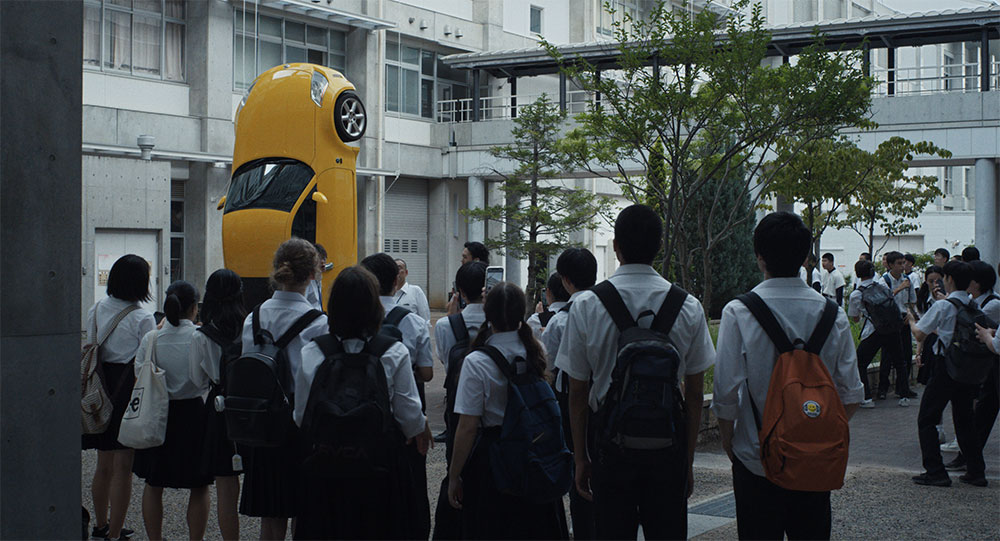
As the IOF’s leveling of Masafer Yatta ramps up throughout the film, so does their violence against Palestinian civilians. Multiple shootings and deaths are documented on camera. It’s crushing to watch. But it’s even more crushing knowing how much worse everything will get once those cameras go down, and how, if you’ve been paying attention to the media, you’ve likely seen far more horrifying images on a daily basis. This year’s “Main Slate” featured work that spoke to struggles around the world, from Benin (Dahomey, 2024) to Mumbai (All We Imagine as Light, 2024), from England at the end of the Middle Ages (Harvest, 2024) to Tokyo in the near future (Happyend, 2024). But No Other Land feels especially important to highlight, both because of its quality and urgency, but also because as of now, the film continues to have no official U.S. distribution.
Another film I have not been able to shake since seeing it is Dea Kulumbegashvili’s April (2024), a tense and nightmarish portrait of Nina (Ia Sukhitashvili), an obstetrician in rural Georgia whose career and safety come under threat when a routine delivery she performs leads to a rare stillbirth. Under investigation for negligence, Nina’s extracurricular work discreetly providing abortions to local women casts a shadow over her case, and we follow her as she uses the time she may have left to help as many as possible.
As in her first feature Beginning (2020), Kulumbegashvili uses long static shots that are as transfixing as they can be difficult to watch. The centerpiece scene of the film involves Nina performing an abortion on a local mute girl, whose mother comes to Nina out of desperation as she has no idea how her daughter became pregnant. The girl lays on the table, the camera just a few feet from the side of her torso, as Nina performs the entire abortion just out of frame. We see neither the procedure itself, nor the women’s faces, instead lingering on the rise and fall of the abdomen—it’s simultaneously scary and ordinary.
A sense of dread and impending violence looms over the entire film; violence both against Nina and against the women to whom she’s trying her hardest to give even a modicum of autonomy over their lives, even at the expense of her own. That being said, April does not idealize its protagonist; it seems that Nina has been depleted by the secrecy and gravity of her work before we’re even introduced to her. Kulumbegashvili does not provide reassurance that Nina’s life will be any easier if her case is dismissed, or if her spirit can be restored even if she began to put herself ahead of her mission.

Almost a decade since her last feature, Chevalier (2015), Athina Rachel Tsangari returns with Harvest. This adaptation of Jim Crace’s 2013 novel of the same name plunges us into the pre-industrial English countryside as turmoil besets a small farming community and the future of capitalism comes knocking. Caleb Landry Jones, who has always convincingly looked like someone wandering 16th-century moorland, plays Walter Thirsk, a former townsperson who now lives and works in the remote village, having fallen in love with the landscape and a local woman years prior. His status as an accepted outsider makes him the perfect candidate to help a visiting mapmaker get a lay of the land and illustrate his findings. The villagers are suspicious of this stranger’s presence, partly because his skin color and ambiguous ethnicity marks him as a clear outsider, but also because of the mysterious nature of his work. Thirsk refers to the mapmaker’s work of transferring the ecosystem onto parchment paper as “magic.”
It turns out that they have good reason to be skeptical: the absentee landowner has hired the mapmaker to chart the boundaries of his property and record the vegetation, as he will soon begin the process of privatizing the commons and establishing a profitable agricultural enterprise. Communal ties quickly unravel as the local farmers grapple with what this all means, while ominous occurrences such as arson, horse slaughter, and outsiders lurking around the land only fan the flames of fear and distrust.
Shot on location in Argyllshire, Scotland, Harvest creates a world that’s on the verge of being left behind until modernity comes crashing in. When the heir to the estate arrives on horseback, clad in pressed clothes and conspicuously free of grime, he may as well have stepped out of a time machine. Although it is not specified in either the film or the novel exactly what year it is, we are witnessing the Enclosure Acts, which began in 1604 and instituted the property rights that revolutionized English people’s relationship to land and capital. When the townspeople are told about how their labor will create coats worn on the backs of wealthier men in the city, the idea seems almost mystic. As beautifully as the natural world is presented, Tsangari does not romanticize their way of life, which is beset with hardship and desperation from the film’s start; however, it rapidly becomes clear, when the arrival of the estate owner brings about exploitation and abuse almost immediately, that there’s no going back.
A more heartwarming, yet no less rich feature is Happyend, Neo Sora’s narrative feature debut (Ryuichi Sakamoto: Opus, a beautiful concert documentary tribute to his late father, screened at last year’s NYFF). The text that opens the film sets the stage of Japan in the not-so-distant future: “Weather buildings creak louder. The systems that define people are crumbling in Tokyo. Something big is about to change.” A group of high school friends play pranks during the day and sneak out to underground raves at night, counting down the days until graduation.
The nucleus of this clique consists of Kou (Yukito Hidaka) and Yuta (Hayato Kurihara), best friends since childhood but with very different social positions: Kou is working class, striving toward a college scholarship, and faces regular discrimination from police and the school administration because he is Korean, while the more privileged Yuta is more free to goof off and face the future with no plan and no concerns. Their high school implements a new surveillance system that monitors the students and assigns demerits for even the smallest transgressions, just as the prime minister is attempting to enact a law that would sneakily allow for more authoritarianism.
This creeping authoritarianism both inside and outside the school creates a rift between the two boys. Kou begins to develop a deeper political awareness and motivation to do something about the injustice he sees in Japan, and is frustrated by Yuta’s immaturity. Sora skillfully balances the personal and political elements of the film, capturing how shifting social forces shape relationships in unexpected ways and push us in different directions. The drama and anxieties of characters on the precipice of adulthood is classic territory for coming-of-age films. Happyend, however, maintains this emotional core while making larger observations, including a not-so-subtle Foucauldian critique of the school as a sort of prison (the surveillance tool is even called “Panopty”), the first disciplinary apparatus that molds us on our way to becoming productive members of society.
The “Main Slate” this year also featured quite the impressive handful of “late period” works by beloved auteurs, the highlight of which was Mike Leigh’s Hard Truths (2024). Marianne Jean-Baptiste (in her first collaboration with Leigh since 1996’s Secrets & Lies) plays Pansy, a British-Jamaican woman who is an antagonist to pretty much everything and everyone in the world around her. She furiously rants about everything from smiling charity workers to cute dogs in sweaters, and the only words she has for her mild-mannered husband (David Webber) and their painfully quiet son (Tuwaine Barrett) are barbed critiques of their every movement.
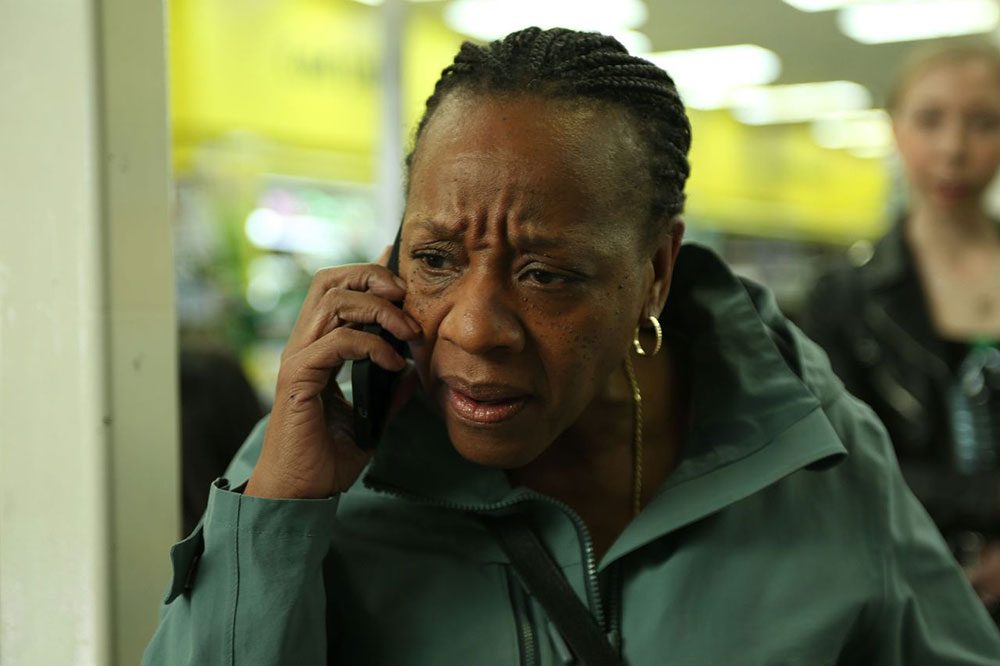
What starts as a series of vignettes featuring Pansy’s explosive, often hilarious interactions, begins to curdle into a darker look at what the character’s undiagnosed mental illness has done to herself and her family. This being a Mike Leigh movie, our understanding of and sympathy for this difficult character only grows. Jean-Baptiste’s performance is tremendous and rather physical. The tension she holds in her body throughout the entire film—this is a woman who is introduced to us when she wakes up screaming—conveys how utterly exhausting it is to be Pansy. By the time her sister, the only other character who earnestly attempts to break through to her, manages to crack her walls and get her to release, Pansy is hollowed out. Leigh doesn’t leave us with satisfactory answers or an optimistic look toward the future for this family unit, but shows, rather, that the door is always ajar if they choose to stand up and walk through it.
The latest films from Paul Schrader and David Cronenberg look death straight in the eye, albeit in very different ways. Schrader’s Oh Canada (2024), which he adapted from Russell Banks’s 2021 novel Foregone, centers on a storied documentary filmmaker named Leonard Fife (Richard Gere) who is nearing the end of his life when his former students ask to make him the subject of their next film. Fife uses this final sit-down interview as a rite of confession, recounting the truth about his past and demythologizing the figure of Leonard Fife to his wife (Uma Thurman), his admirers, and to himself. Gere, reuniting with Schrader 44 years after American Gigolo (1980), plays Fife at multiple points in his life (including on his deathbed), while Jacob Elordi portrays a young version of the character in the 1960s. However, Gere replaces Elordi in some of these flashback scenes, as if the older Fife is taking over his own memory, creating confusion as to whether he is actually a reliable narrator, even in his last-ditch attempt at honesty.
Schrader has been prolific over the past decade, and his more recent work (2017’s First Reformed, 2021’s The Card Counter, 2022’s Master Gardener) reveals a fascination with men seeking redemption, particularly at the feet of women they respect. Small in scale—with budget restrictions undoubtedly being a large factor—each of these films focus on an individual coming to terms with himself and his sins, content with shrinking his world almost as a form of atonement. For Leonard Fife, the passage of time is shrinking his world for him, but he’s using what time and energy he has left to come clean. It’s a poetic film that feels imbued with the sense of knowing the end is approaching. So while First Reformed (2017) may be the ultimate masterpiece of the back half of Schrader’s career, Oh Canada may end up being a key text for this later period.
If Oh, Canada is concerned with the memories in one’s failing mind, then The Shrouds (2024), in classic Cronenberg fashion, is more preoccupied with memory and the body. Vincent Cassel (a YSL-clad stand-in for Cronenberg) plays Karsh, whose mourning of his late wife prompts him to develop a high-tech cemetery in which deceased loved ones’ decomposition can be viewed in real time. Karsh describes to a woman—on their first date, no less—how “when they lowered my wife into the ground, I had the strong, visceral urge to get into the box with her.”
Countering the more spiritual focus on the departure of the soul in death, Cronenberg is more fascinated with the grief over losing the lover’s body. Karsh’s controversial project draws a lot of negative attention, so he isn’t too surprised when some of the gravestones are vandalized. But when he learns that someone is manipulating his technology and finds odd nodes on his wife’s bones that don’t seem biological, he begins to uncover a larger conspiracy. Amid all this tumult, he begins sleeping with his deceased wife’s twin sister (Diane Kruger). For a film that Cronenberg has described as “autobiographical” and inspired by his own wife’s passing in 2017, it’s surprising how humorous and horny The Shrouds is.
There is some body horror in The Shrouds, with Karsh’s wife appearing to him in his dreams more scarred and dismembered each time, but I would still place this film among the filmmaker’s colder, more philosophical 21st century work. For having a premise based on watching the decay of bodies, the world of the film is sleek and sterile, continuing Cronenberg’s move away from the messy intermixing of technology and physical bodies characteristic of his earlier work. This isn’t necessarily a bad thing, but I wish The Shrouds had done a bit more with the interesting ideas established at the film’s start, namely regarding death being on display in an age of surveillance so constant it extends even into the afterlife.
This year’s “Main Slate”—the surface of which it feels like I’ve only scratched here—was a collection of films incredibly diverse in subject matter and sensibility, but tied together by a shared wrestling with boundaries: boundaries between communities, between individuals and institutions, between colonizers and the subaltern, and between life and death. Some of these dissections are more overtly political than others, but the lineup contributed strongly to the tenor of the festival as a whole, which provoked reflection on the kind of social responsibility that film culture should have and the hard lines we should push cultural institutions to take.
Olivia Crough, Currents
One way to write Sappho’s fragment “you burn me” is with a trio of images: a building in motion, a finger pressing an apartment buzzer, and a hand under a running faucet. In Spanish (“tú me abrasas”), the images for “burn” and “me” swap places. Matías Piñeiro’s superb You Burn Me (2024) leads the viewer through several of what Piñeiro calls “mnemotechnic games,” where repetition creates associations between words and images. A silent montage prompts each viewer to write a yet-to-be-rediscovered complete poem.
With You Burn Me, Piñeiro exits his cycle of Shakespearean films and turns to a new text: the Italian writer Cesare Pavese’s “Sea Foam” (1947), which imagines a dialogue between Sappho and the nymph Britomaris. As myths go, Sappho turned to foam out of heartache and Britomaris jumped into the sea to escape a man. Desire flows two ways, but leads both women to water and death. “Everything dies in the sea and comes back to life,” Britomaris says. With actors Gabriela Saidon, Agustina Muñoz, and María Villar, the fluid and polyphonic film enacts an endless process of re-reading (the yet-to-be-read Sappho poem provokes the caption, “this poem reminds me of another poem”) and inhabits states of anguish and desire—when anything can become an image of a lover or a burn.
You Burn Me is one of several films that concern language and absence in this year’s “Currents” program, a section of the festival for “new and innovative voices” in contemporary cinema. Madeline Hunt-Ehrlich’s The Ballad of Suzanne Césaire (2024) depicts the filming of a fictional biopic of Suzanne and her husband Aimé Césaire’s years in Martinique during World War II. This was a period of rich collaboration, when they founded the journal Tropiques and theorized the Négritude movement, Afro-Surrealism, and Caribbean identity. Suzanne also enjoyed a close friendship with André Breton. After the war, Aimé became a left-wing politician in France and his work as a poet and writer is widely celebrated. Suzanne raised the couple’s six children and in 1945, at age 30, stopped publishing and burned her papers.]
“How can you make a film about a woman who didn’t want to be remembered?” asks Zita Hanrot, the actor playing Suzanne. Between takes, she is distracted by her child. The film crew also appear lost and unsure of what they are making. I found these self-reflexive moments the most compelling aspect of the film and I wish they had been longer. They foreground Hunt-Ehrlich’s artistic process and, importantly, question the popular project of “rediscovering” women’s work, which too often results in hagiography. Perhaps the sentimental reenactment scenes–which feel more concerned with Suzanne’s relationships and beauty than her ideas–point to this danger. For most of the film, the camera lingers on long takes of Martinique’s lush flora, bringing to mind Suzanne’s descriptions of the island in her lyric essay “The Great Camouflage” (1945): “Here life lights up in vegetal fire.” In these shots, where loose pages sometimes tumble in the wind, Hunt-Ehrlich insists on the writer’s obscurity.
Jimmy (2024), by photographer-filmmaker Yashaddai Owens, responds to a different scenario: the overdetermination of a famous writer’s image. In grainy black-and-white 16mm, Owens imagines how James Baldwin may have felt when he fled America at the age of 24. Actor Benny O. Arthur wanders present-day Istanbul and Paris, his gestures and expression alternating curiosity, loneliness, and relief. He is awkward as he eyes cute boys in a store, before stealing a typewriter. As an adult, Baldwin had a firm grasp of his persona and voice, and Owens is more interested in the writer’s formation. He mostly conveys this through movement rather than dialogue. This is Owens’s first feature film and its impressionistic style feels undeveloped, but I’m interested to see what he makes next.
This year, I was most surprised by Matthew Rankin’s Universal Language (2024), which takes place in an alternate Winnipeg where Farsi is the official language. In a charming homage to 1980s Iranian cinema’s meta-realism and playfulness (in particular, Abbas Kiarostami’s 1987 film Where is the Friend’s House?), a student seeks to replace her classmate’s missing eyeglasses, traversing the city’s monotonous “Beige,” “Grey,” and “Brown” districts. (The delightful set includes a Farsi Tim Horton’s and a mural of Pierre and Justin Trudeau with the words, “A Strong Economy Helps To Prevent Feelings of Worthlessness.”) Rankin, who is from Winnipeg, appears as Matthew, a depressed bureaucrat returning home to a mother who has replaced him with a new son, Massoud. He describes the film as “autobiographical hallucination.” Written by Rankin in close collaboration with Pirouz Nemati and Ila Firouzabadi, the script commits to the bit, with a deadpan humanism that recalls the films of Aki Kaurismäki. A briefcase left on a bench becomes a UNESCO World Heritage Site, “a monument to absolute interhuman solidarity, even at its most banal.”
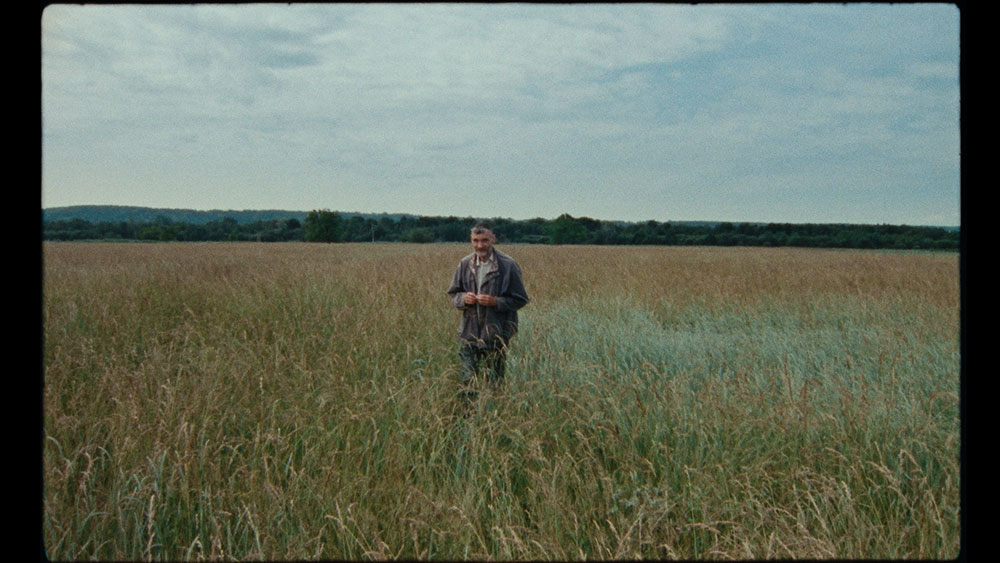
7 Walks with Mark Brown (2024) was directed by the filmmaker and farm worker Pierre Creton with his frequent collaborator Vincent Barré. The first half (“The Filming,” shot in handheld dv) follows the paleobotanist Mark Brown and a small crew through fields, glades, and peat bogs in rural Normandy. Those familiar with Creton’s work will recognize his singular world of friends and lovers patiently immersed in the life of plants. As the group ambles and chats, Antoine Pirotte (star of 2023’s Un Prince, NYFF 61) shoots each specimen on 16mm. The film’s second half (“Herbarium”) reveals this radiant footage. With tender joy and reverence, Brown describes species that have survived for millennia and the pollinators that sustain them. He is moved to tears when he contemplates a fern and its future on a dying planet.
Another side of French environmentalism is seen in Guillaume Cailleau and Ben Russell’s 216-minute Direct Action (2023), which documents life in the militant activist Notre-Dame-des-Landes commune. To hide participants’ identities (the French government considers them “eco-terrorists”), the camera focuses on manual gestures: hands sharpen blades, push seeds into tilled soil, play chess, and, in the most mesmerizing sequence, knead a tub of dough. If you have the patience, the film rewards you with an experience of communal time and the labor that sustains a mass movement.
The phrase “direct action” usually conveys confrontation and protest. These are only experienced toward the end of the film, when activists protesting a planned reservoir battle French police in an open farmland. The scene reminded me of the great Ogawa Pro documentary Peasants of the Second Fortress (1971), where rural land workers fought to block the Japanese government from building a new international airport. Direct Action asks how, in 2024, to make a film politically; during the protest, a person screams at the camera, “This isn’t what you should be filming!”
The portrait of land and work in Marta Mateus’s Fire of Wind (2024), a turgid film set in rural southern Portugal, is less convincing. Despite quoting texts on socialism and labor, the director does not mention—except in the end credits—that the cast, posed stiffly in trees, are workers on her family’s vast vineyard. This is Mateus’s first film and many shots are certainly beautiful, but it comes off as a pastiche of Straub-Huillet without thesis or passion.
Some of this year’s strongest short films register a more conflicted relationship with image making. Danielle Dean’s Hemel (2024) is an unsettling essay film about her hometown in the United Kingdom, the site of a 2005 toxic explosion, in the form of a B sci-fiction. Jordan Lord’s An All-Around Feel Good (2024) and John Smith’s Being John Smith (2024), are introspective films that describe the artists’ experiences of discomfort and distraction while making work amid illness, climate change, and, especially, Israel’s American-backed genocide of Palestinians. An All-Around Feel Good asks us to consider the relationship between violent nation states and discourses of disability. Being John Smith, a funny meditation on the strangeness of being named John Smith, is sidetracked by the 71-year-old artist’s cancer treatment and the thought that we will all soon disappear, leaving only cockroaches to look at our art. Finally, Karimah Ashadu’s Machine Boys (2024) is a captivating portrait of illegal motorcycle taxis (“Okada”) in Lagos, Nigeria. The bikers describe the extreme precarity and danger of this work (“My mind is disturbed whenever I’m riding my bike”), while Ashadu’s active camera exhibits their defiant performances of masculinity.
